Woodburning: Getting Started
by BeccadK in Workshop > Woodworking
70809 Views, 403 Favorites, 0 Comments
Woodburning: Getting Started
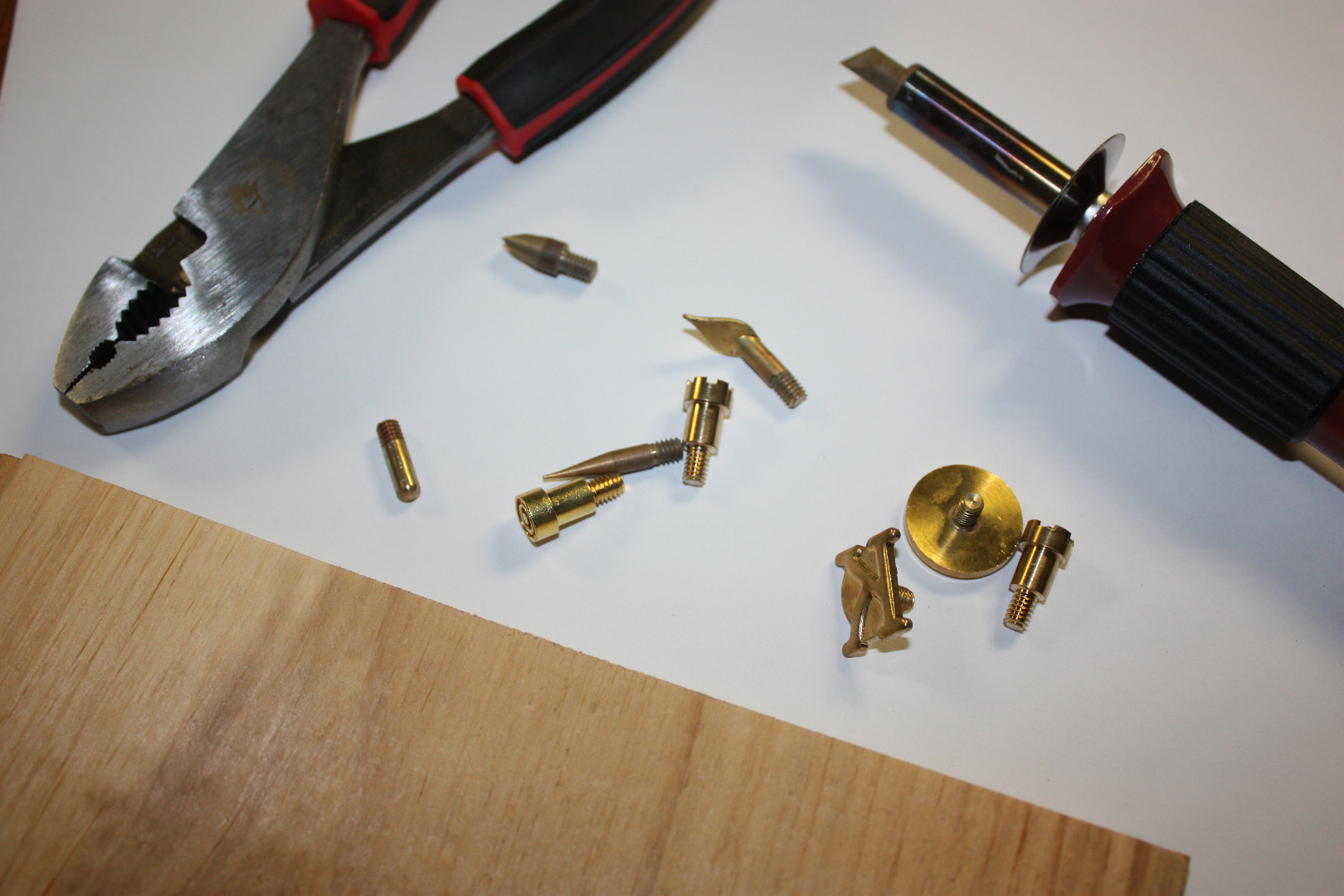
When I first got my woodburning set I can no idea where to begin. There were several different tips that came with my set, so before I started on any special projects I sat myself down with a scrap piece of wood and spent a bit of time testing each tip. This instructable can be used as a beginners guide for woodburning and will demonstrate some of the things that each tip can do. So grab your woodburner, some scrap wood and lets get started!
Materials
Materials:
Scrap piece of wood (sanded)
Woodburner Set (my set is Walnut Hollow Creative Versa Tool)
Pliers
Ceramic Dish
We don't need anything fancy as we are just playing around with our woodburner. Leave the nice wood for your future projects. You want to sand the surface before as it will make it easier to burn smoothly. Your pen could get caught on bumps on the surface of the wood.
I picked up my woodburner set at Michaels. Nothing super fancy, but it gets the job done for a hobby artist.
You need pliers to remove the hot tips from the woodburner pen and to put new tips into it. I always turn off my pen and then remove the tip. After I have put in the new tip I will turn the heat back on again.
A ceramic dish can be used to hold your hot tips when you remove them from the pen.
Universal, Flow, Calligraphy Tips
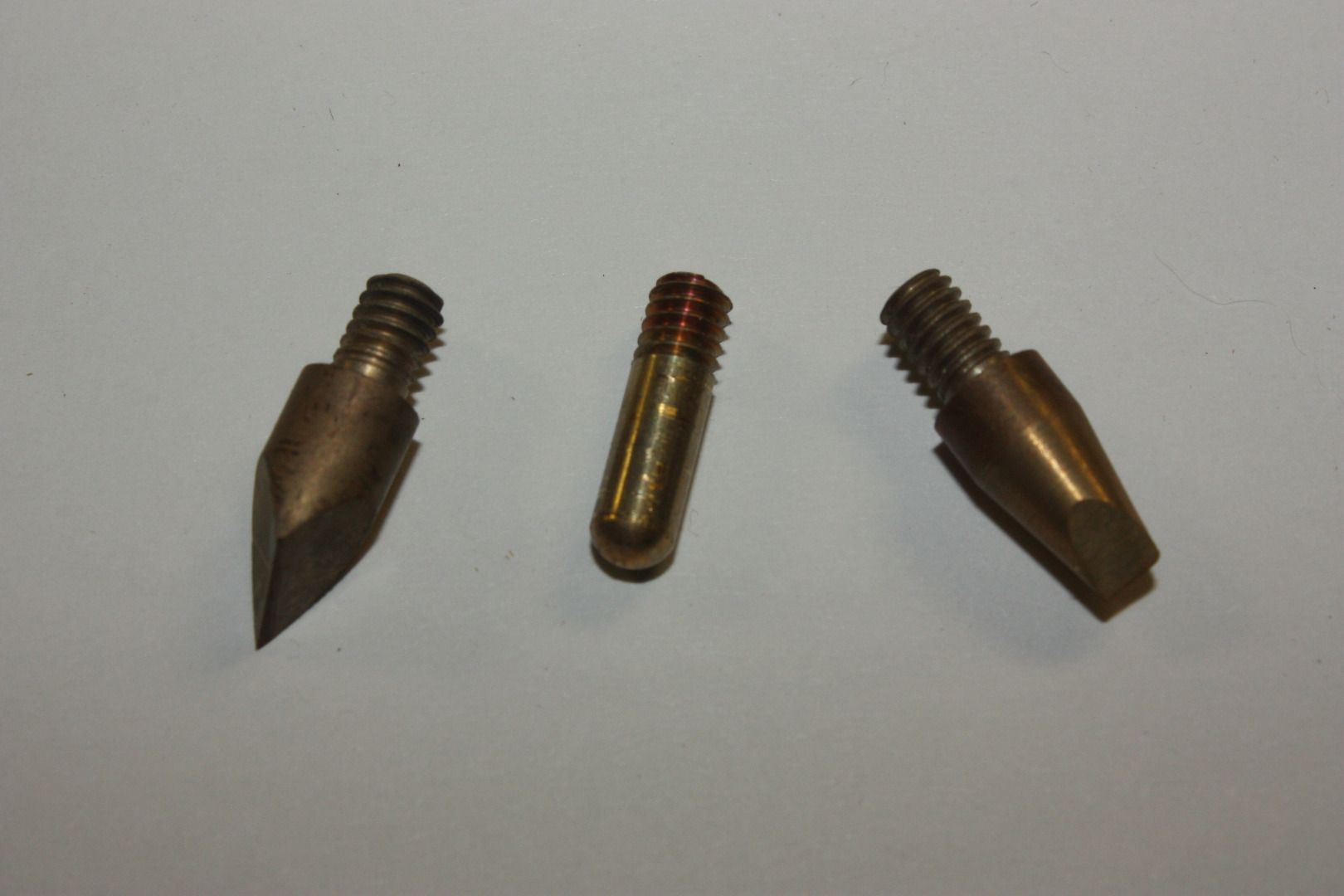
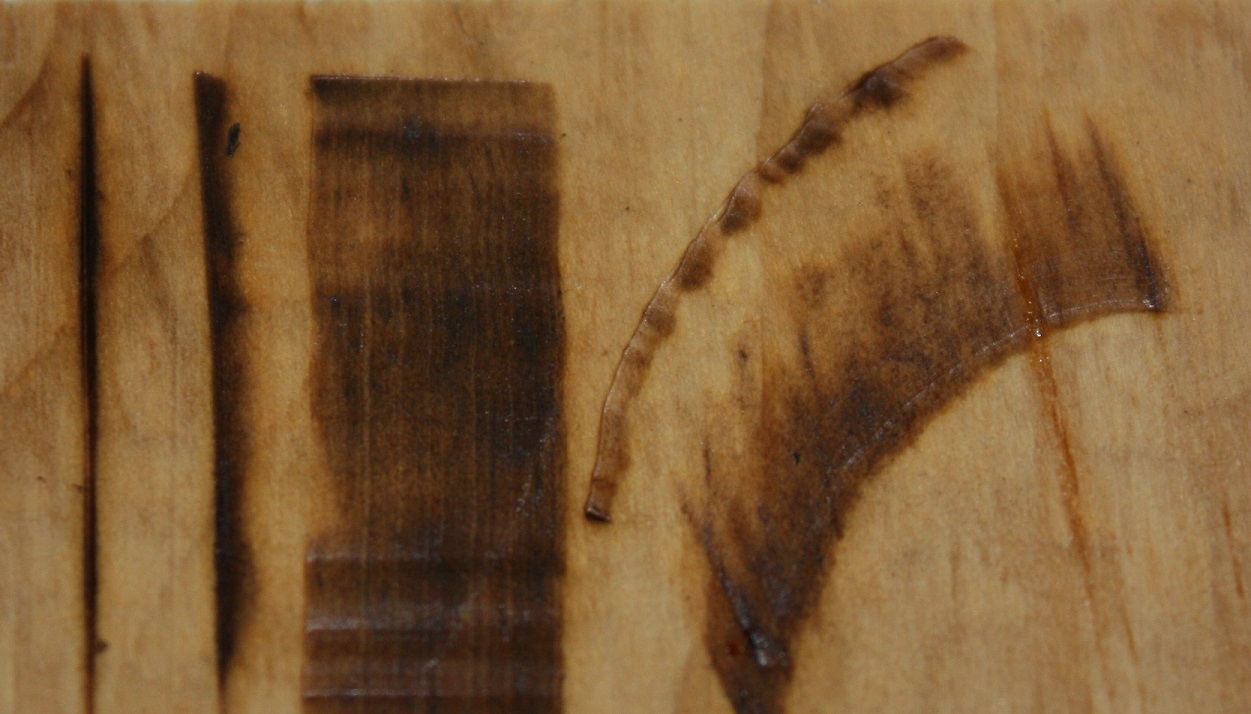
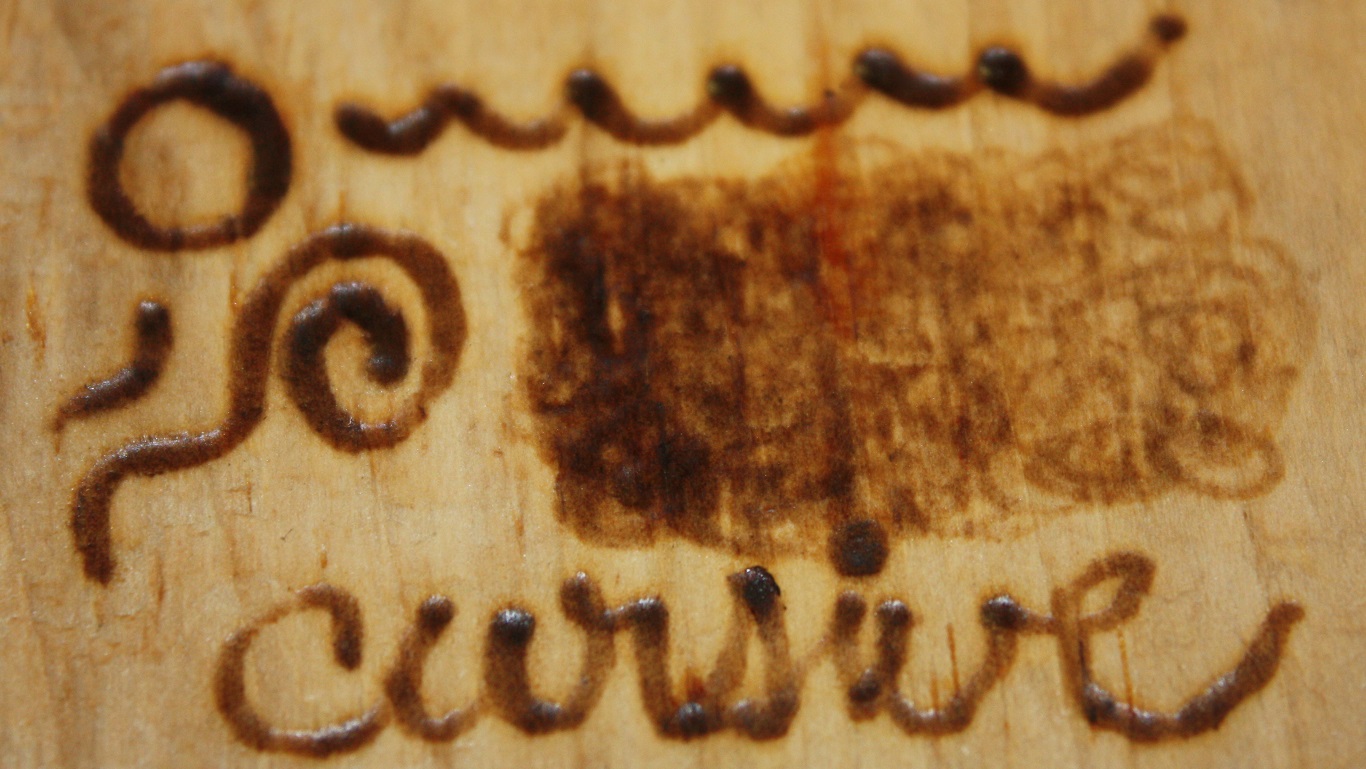
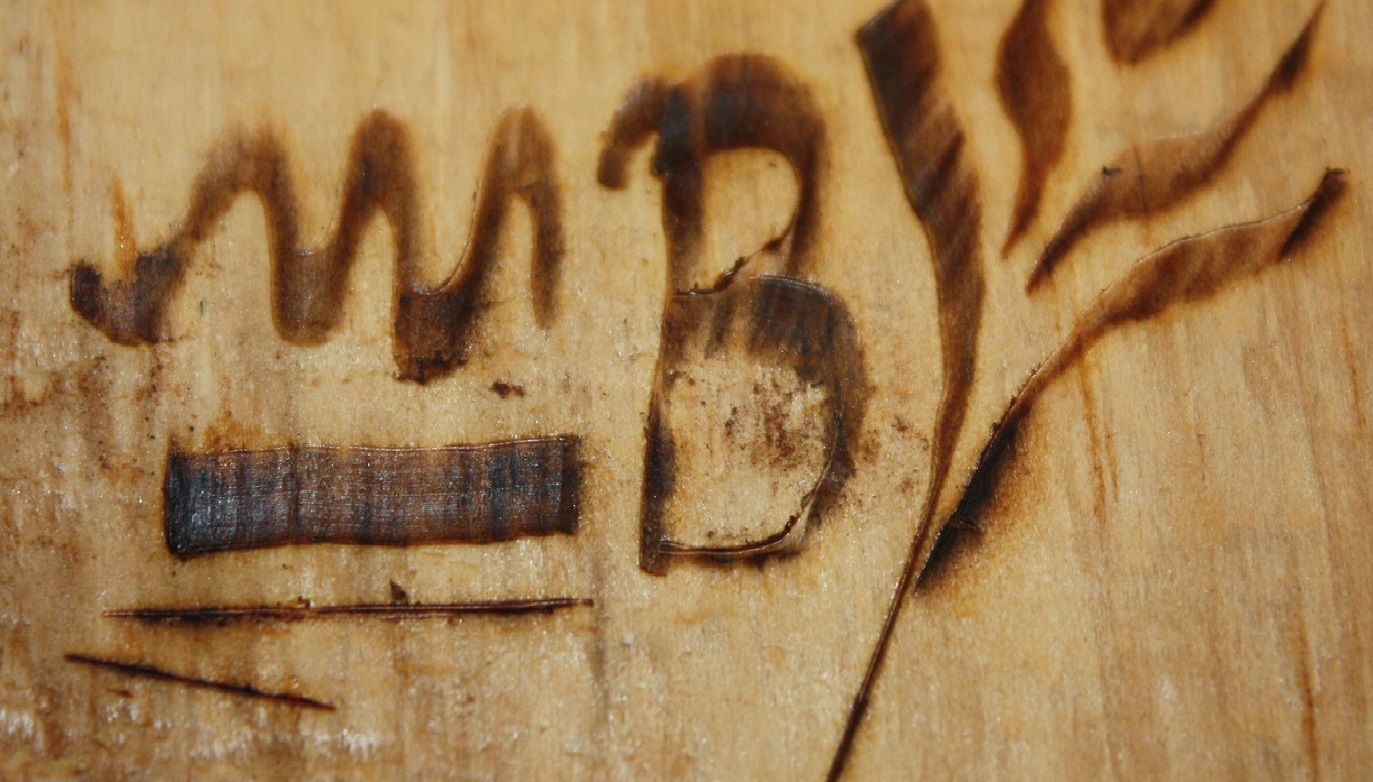
The universal tip has a sharp thin edge that is angled to a point and is angled on both sides. It can do a variety of things depending on how you hold the pen. You can make thin lines if you hold it straight, medium lines if held on an angle and thick lines if you pull the pen sideways instead of up and down.
The flow tip is smooth and round. Because is this it glides very nicely over the wood and doesn't accidentally cut it. It is easy to change directions and made spirals and swirls. However, it is difficult to make thin lines as you cannot change the thickness of the line you make. By working in a small and continuous circle motion you can create a shading effect. Slower, tighter circles will result in a darker tone, as will layering the effect in certain areas. It can also be used to make dots.
The calligraphy tip is similar to the universal tip, except that the sharp edge is not angled to a point. It can create calligraphy style lettering and burning techniques. Like the universal point is is capable of making very thin lines or thicker lines depending on how you hold and move the pen.
Tapered, Transfer, Shading Tips
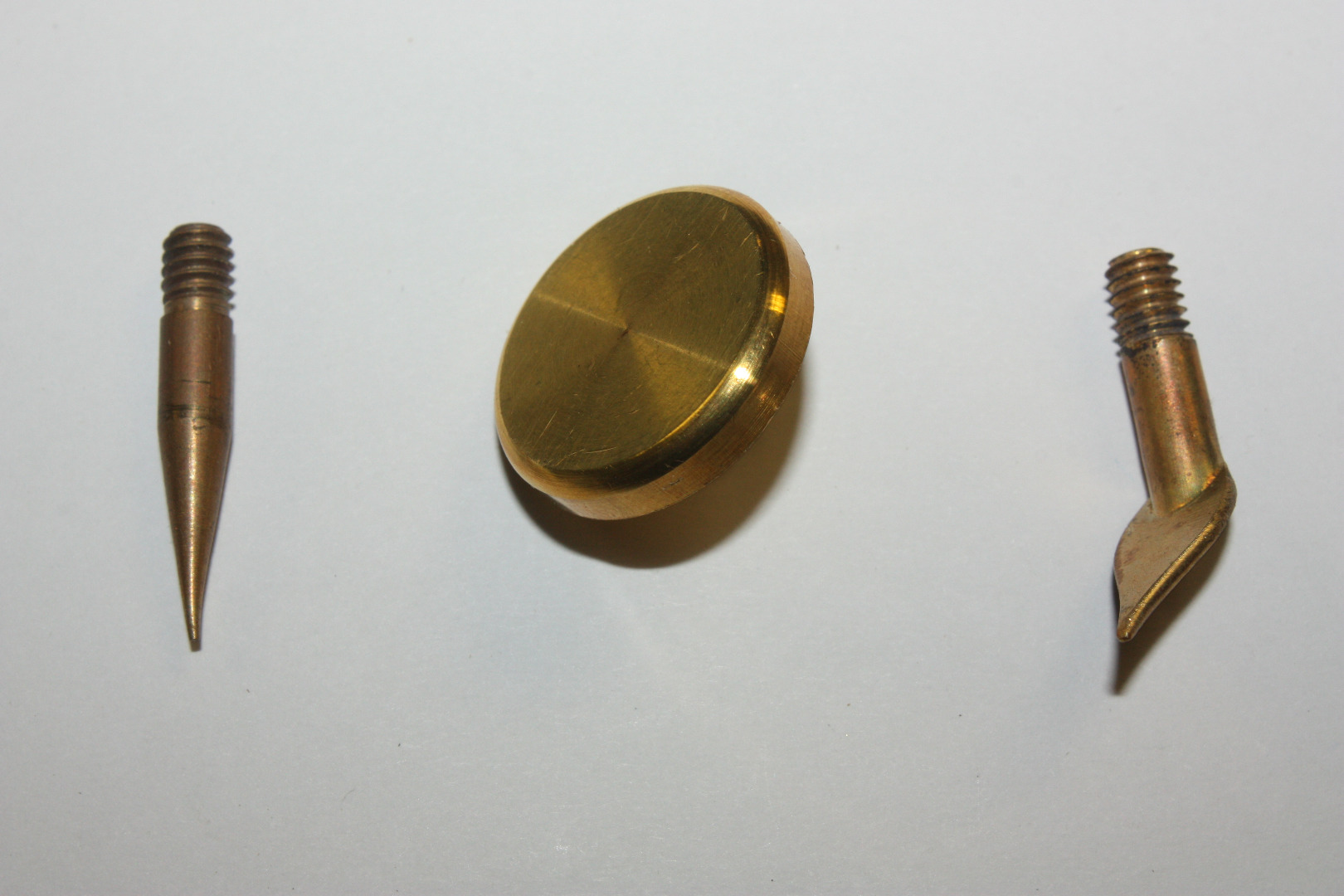
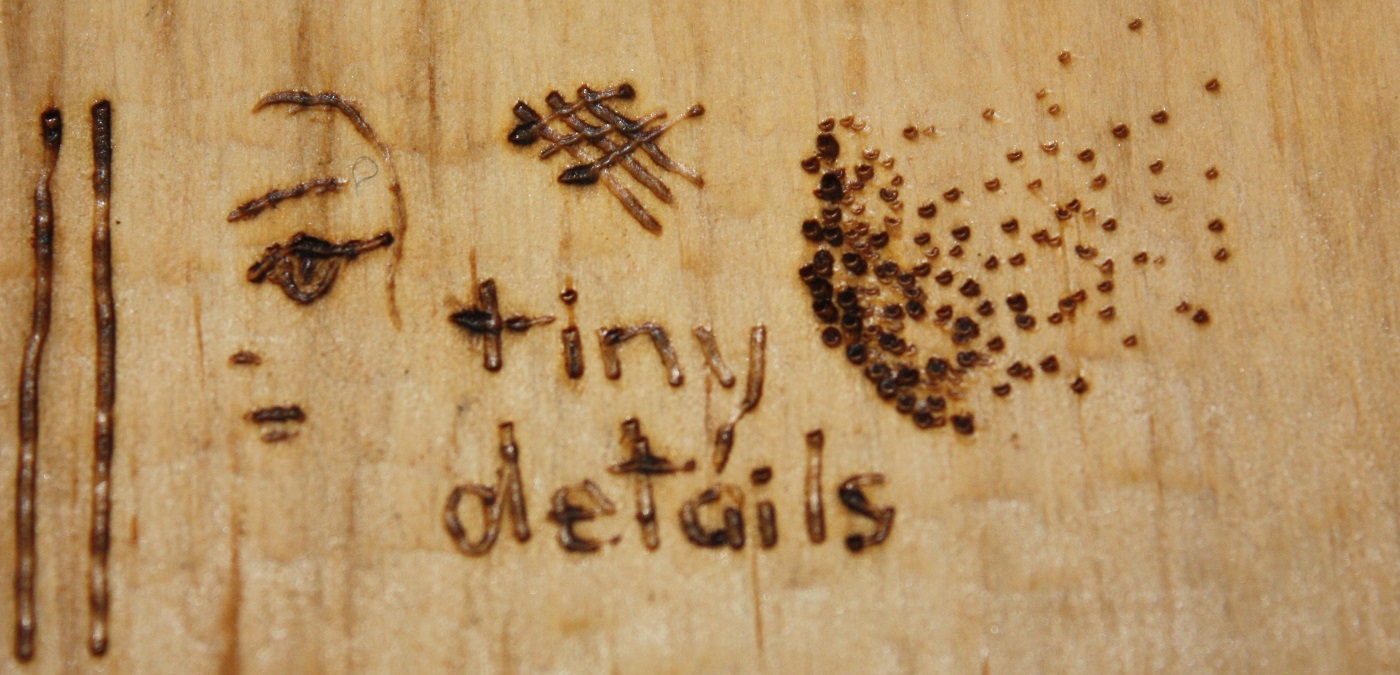
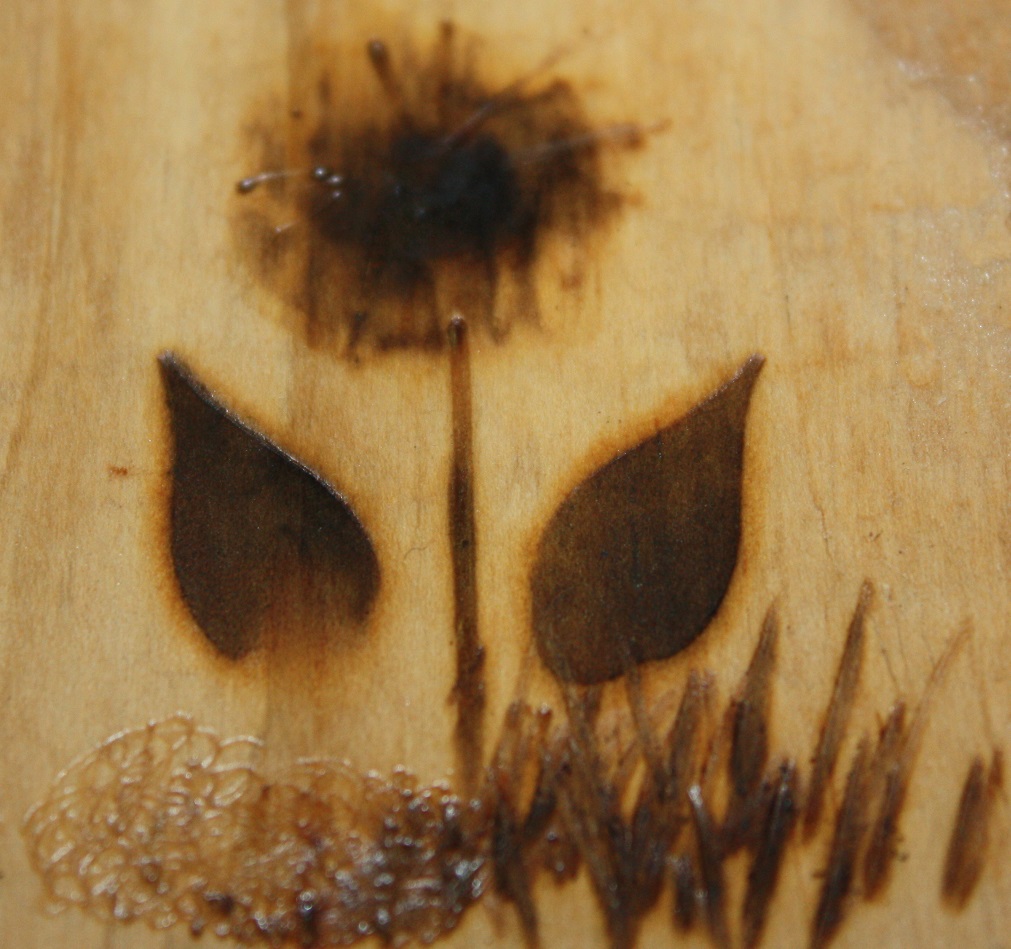
The tapered tip is a sharp cone shape. It is capable of making very small details and designs because of its tiny point. You can use it to make thin lines or small dots.
The transfer tip is a large flat circle. It is used to transfer black and white laser copy images onto the surface of the wood.
The shading tip is flat leaf shape. You can use this to create different shading effects. Pressing the whole flat side of the tip to the wood can make a leaf shaped stamp. Using the very end of the point you can shade small areas, or you can use the heel and flat side of the tip to shade larger areas quickly. The side edge of the tip can be used to make thin lines.
Stamping Tips
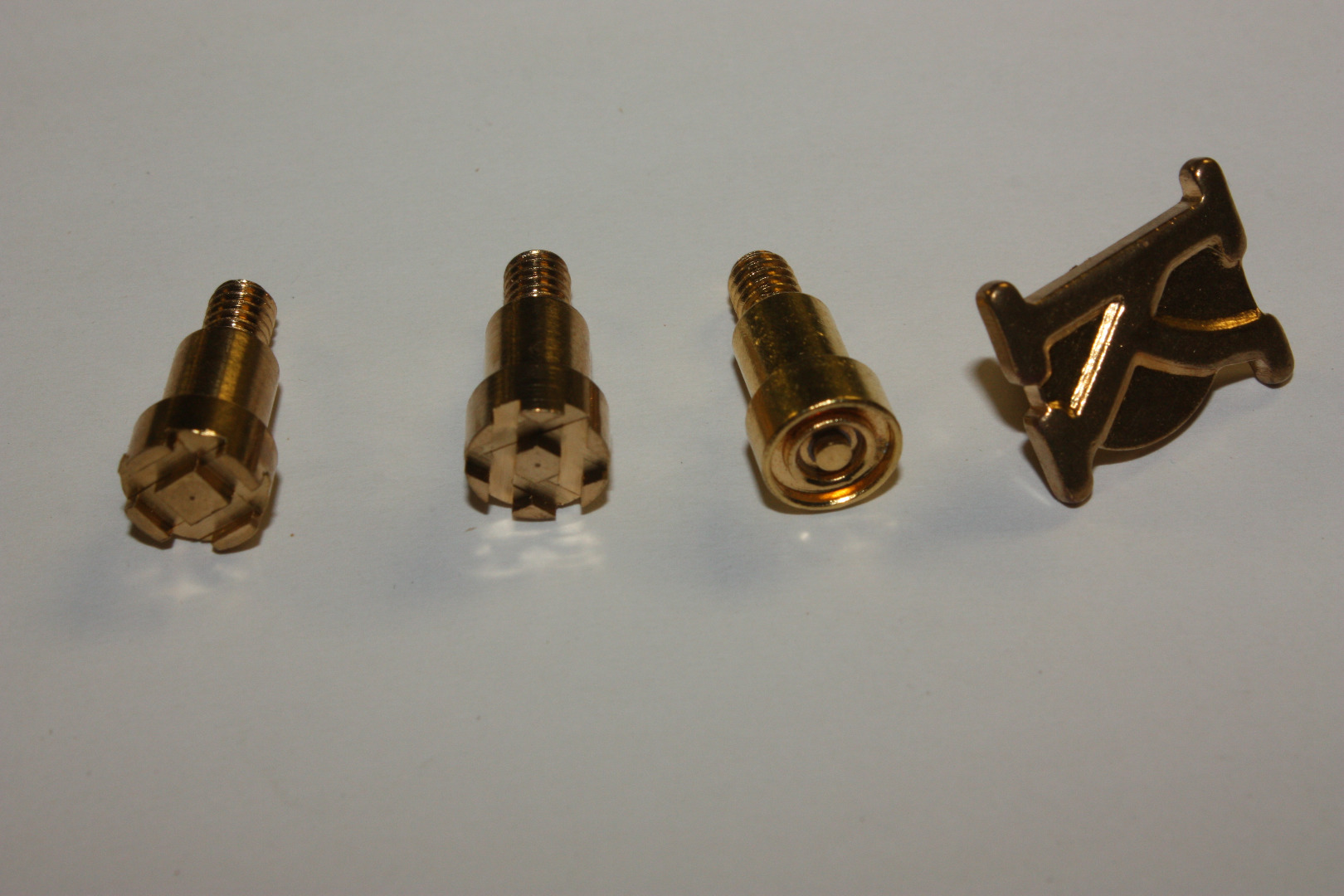
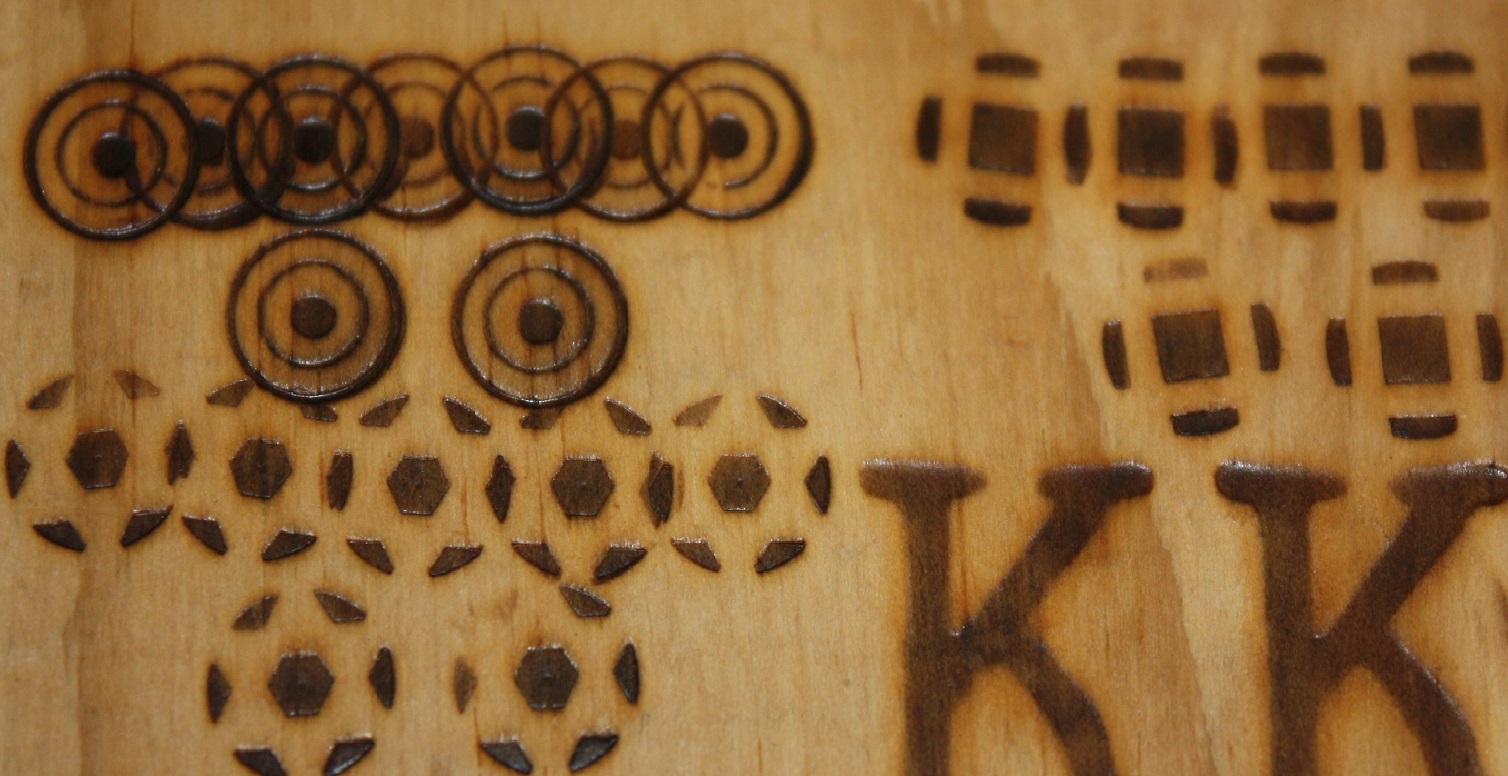
I've demonstrated a few different stamps here.
Stamps can be used to create interesting patterns or borders. With letter stamps you can quickly add text to your woodburned works. When using a stamp you want to press it against the wood and then almost gently rock it in a circular motion without removing it from the wood. This makes sure that you burn all of the stamp onto the wood. You should hold the stamp down long enough that you will have a clear mark, but not so long that you will scorch the surrounding wood from the heat.
Advice for Getting Started

Avoiding "blobs"
If you hold your pen against the wood and then start to draw your line you will end up with a blob. To avoid these you should always keep your pen in motion. Think of your pen as a plane that is coming in for a landing and then taking off again. It should come into the landing while it is moving and take off again in the same fluid movement.
Correcting mistakes
You can correct small mistakes by gently sanding it away or by carefully scraping it with the edge of a sharp blade (like an exacto knife). This only works if the burn only on the very surface and is not deep into the wood. Carefully scraping or sanding the mistake can remove the burned wood and reveal the wood beneath it.
Practice
Try out your tips before you start any big projects, everyone has their own tip preferences. When you are working on a project keep a scrap piece of wood next to you. You can use this to test the heat of the tip and practice techniques before you apply them to your project.
Selecting wood
Try to select a piece of wood that does not have grain patterns that will distract from your piece. Don't think that this means you need to find a piece that doesn't have much grain pattern. Finding the right grain pattern that will work with your piece can add a whole new level to your woodburning! Knots are NOT easy to burn into and are quite unsightly (I like to used knotted wood as my scrap practice pieces.) However, you can incorporate the knots of the wood into your design for a great point of interest.